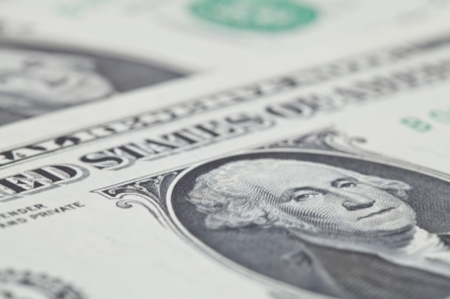
Investing.com – The U.S. dollar rose Monday, continuing the positive tone generated by the new Trump presidency ahead of the release of key inflation data and with a number of Federal Reserve speakers due this week.
At 04:20 ET (09:20 GMT), the Dollar Index, which tracks the greenback against a basket of six other currencies, traded 0.3% higher to 105.207, after gaining 0.6% last week.
Dollar maintains strength
The dollar surged to a four-month high last week after Donald Trump claimed a return to the White House, with its tariff and immigration policies seen as inflationary, and thus likely to prompt the Federal Reserve to reduce rates at a slower and shallower pace.
While the greenback’s rally was stalled by an interest rate cut by the Federal Reserve, it still retained a bulk of its recent gains.
“The thesis for dollar bears now is that it will take a while for tariffs to come through and the Federal Reserve’s recalibration to less restrictive monetary policy – plus end-year dollar seasonal patterns – could see a benign decline in the dollar into year-end,” said analysts at ING, in a note.
“We disagree and think this clean election result can boost US consumer and business sentiment at the same time as it weighs on business sentiment elsewhere in the world.”
Trading is likely to be light Monday (NASDAQ:MNDY) with U.S. bond markets closed for a public holiday, with attention turning to the release of consumer inflation data for October, due on Wednesday.
A slew of Federal Reserve officials are also set to speak this week, after the bank cut interest rates by 25 basis points last week.
Euro heading lower
In Europe, EUR/USD dropped 0.3% to 1.0688, weighed by Trump’s proposals for tariffs on imports, which could hurt European exports, as well the political turmoil in Germany, the eurozone’s biggest economy.
German Chancellor Olaf Scholz last week sacked his finance minister, paving the way for a snap election after months of disagreements in his three-party coalition.
The latest reports suggest “a no-confidence vote could be held in December and a snap election as early as February. It seems a leap of faith at this stage to expect a complete turnaround in the German fiscal position and instead the onus will be on the European Central Bank to support the eurozone economy,” ING added, expecting the ECB to cut by 50 basis points in December.
GBP/USD fell 0.2% to 1.2900, after the Bank of England delivered its second rate cut since 2020 on Thursday, dropping by 25 basis points to 4.75% from 5%.
BoE Governor Andrew Bailey makes an important Mansion House speech on Thursday, as traders look for monetary policy guidance in the wake of the Labour government’s expansionary budget.
“Given that the UK economy has been performing quite well and Donald Trump’s policies could prove inflationary, Bailey may not want to repeat his narrative that UK rates could be cut faster than expected,” said ING.
Yuan slips after new debt package
USD/CNY climbed 0.2% to 7.1934, remaining close to three-month highs after China’s National People’s Congress outlined plans for more fiscal spending.
The NPC approved a 10 trillion ($1.4 trillion) debt package last week, aimed at easing local government debt levels. But the measure disappointed investors hoping for more targeted, fiscal measures.
USD/JPY rose 0.8% to 153.83, with the yen falling after the Bank of Japan’s October meeting showed policymakers were split over more interest rate hikes, sparking more uncertainty over when the BOJ will raise interest rates further.
This uncertainty bodes poorly for the yen, which was already battered by increased political uncertainty in Japan after the country’s ruling Liberal Democratic Party lost its parliamentary majority last month.
This post is originally published on INVESTING.



